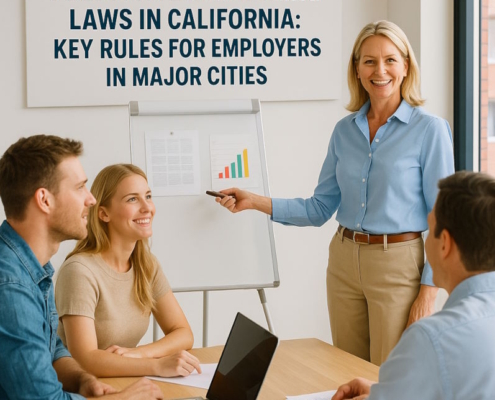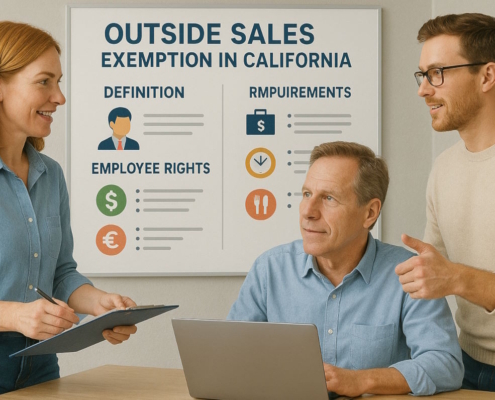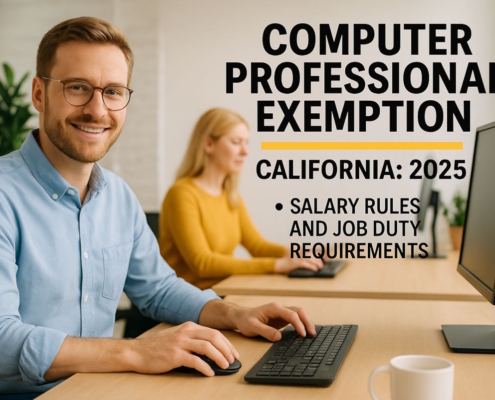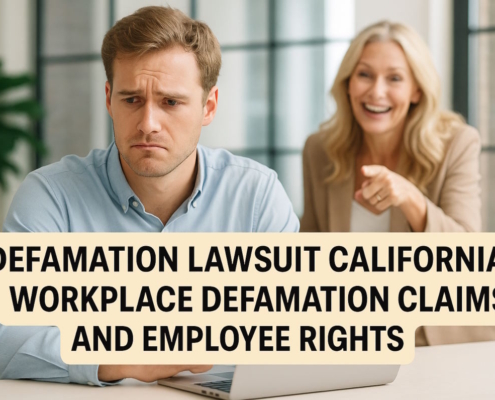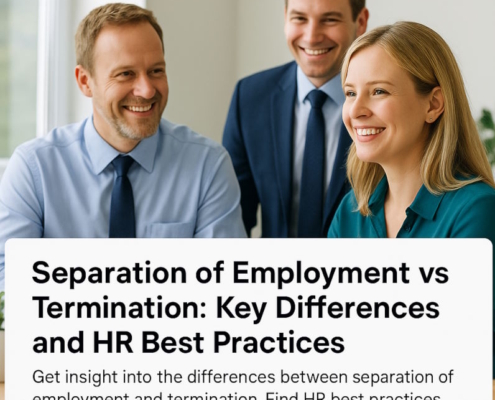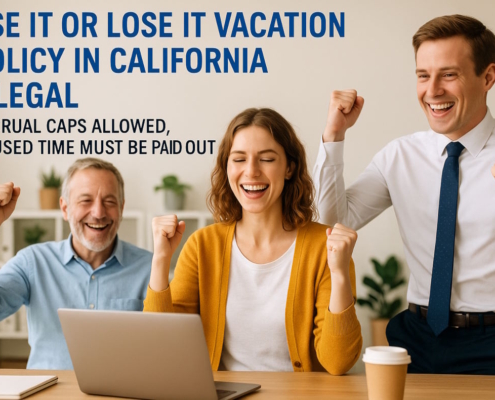What does it mean to have a multi-generational workforce?
The modern workforce spans multiple generations, and the ways in which people of different ages work, interact, and communicate are vastly different. Businesses can achieve greater success if they adopt practices that cater to employees of all ages. How can your company take advantage of having employees from different generations?
What is the definition of a multigenerational workforce?
When employees span multiple generations, we say that we have a multigenerational workforce. More and more people are opting to keep working much past the conventional retirement age, thanks to the fact that the average human lifetime has been steadily rising.
There is more age diversity in the workforce now than there has ever been before. Coworkers spanning four or five generations are becoming the norm in many companies.
You can think of these categories as:
- Silent Generation (Traditionalists): people born between 1928 and 1945
- Baby Boomers: those born between 1946 and 1964
- Generation X: people born between 1965 and 1980
- Gen Y (Millennials): people born between 1981 and 1996
- Generation Z: people born between 1997 and 2012
Having people from different generations in an organization changes its demography and increases the amount of talent accessible. But many companies still aren’t making an effort to take advantage of this.
To discover the most effective ways to recruit, engage, retain, and develop people from all walks of life, HR directors should take into account all age groups when they prepare for succession and the future of their workforce.
Advantages of having a multi-generational workforce
Staff members of varying ages bring something special to the table. Employees in their twenties and thirties are more used to keeping up with the ever-changing technological landscape. Similarly, individuals with more years of service have accumulated wisdom that can inform decision-making. Increased productivity is the result of combining new ideas with insights gained from past experiences.
A multigenerational workforce has many advantages, including the following:
- Various points of view: People of different generations may have different expectations when it comes to their work. Teams that are able to communicate and collaborate effectively have access to a wealth of information and skills that can fuel creativity.
- Problem-solving skills: Creative answers to problems come from combining different points of view and skills. Our relationships and interactions with people shape our responses to adversity and conflict based on our life experiences. Therefore, teams with a range of ages might provide different perspectives on how to solve issues.
- Mentoring and learning possibilities: A team with a wide range of backgrounds and experiences has more opportunities for members to connect with and learn from one another. This encompasses mentoring opportunities that benefit both parties. More seasoned workers are in a better position to counsel less seasoned workers on how to advance in their careers. In addition, younger workers can teach older ones about new technologies and trends through the growing practice of reverse/cross-generational mentorship.
- Transferring and retaining knowledge: The company is better prepared to address its leadership needs in the future thanks to the insights and abilities offered by each generation. A strong internal talent pipeline ensures that tacit knowledge remains within the organization. There has been a shift in emphasis away from external recruiting and toward internal promotions.
- Personal connections: Working relationships that are meaningful can help employees meet their emotional needs and make them happier at work. The company’s age distribution is structured like a family, so employees of all ages can meet and get to know one another.
Problems with a multigenerational workforce
A multigenerational workforce has many benefits, but it also presents some challenges.
Here are a few key points about the difficulties of managing a staff that spans multiple generations:
- Concerns with communication: Generations presumably have different preferred modes of expression and understanding of tone. There is no shortage of ways to get in touch with staff members nowadays, what with the prevalence of email, IM, phone, and video conversations. You need to give some thought to the ideal technique to communicate with your team so that you don’t have any misunderstandings.
- Negative stereotypes: As with any form of diversity, individuals have preconceived beliefs about folks of different ages. Some members of the older generation may view younger workers as entitled and overly sensitive “snowflakes,” whereas employees of a younger age may view their elders as rigid and hesitant to adopt new technologies. Legal issues, discrimination, ageism, and a poisonous work environment are all possible outcomes of these broad generalizations that give rise to negative stereotypes.
- Employees of different generations could have significantly different expectations from their jobs: Everyone has their own unique method of getting things done, absorbing new information, and preparing for and receiving feedback on their work. Furthermore, different generations may have different ideas about what constitutes an acceptable salary and benefits package.
Managing employees from different generations
Having effective, cohesive teams and bridging the generational divide are two of HR’s most important responsibilities. In order to achieve success, how can you navigate a workforce that spans multiple generations?
When leading a staff that spans multiple generations, consider these nine management practices:
- Develop your EVP (Employee Value Proposition)
Can people of all ages relate to your EVP? Workers of all ages can find fulfillment in their work when they have access to cultural benefits. Creating a desirable workplace and providing a range of benefits that appeal to different types of employees is the key.
Everyone, regardless of age, can get behind health, work-life balance, and paid vacation policies and initiatives. But other goals, such as social activities, financial investment programs, possibilities for professional and career progression, community service, and professional development, can attract people of all ages.
- Make your hiring process more inclusive
It is important to avoid age bias in the hiring process at every stage, from sourcing to making an offer. Get the hiring staff educated first, and then use all the channels at your disposal to find candidates. (You shouldn’t limit your search for entry-level candidates to college job fairs.)
Wording in employment adverts can deter candidates of different ages. Check that they are inclusive. Stay away from generational slurs and use age-neutral vocabulary. Your career site should also provide media featuring individuals from a variety of age groups.
Inferring demographic information from resume specifics such as dates, names, and more is possible. One way to circumvent these prejudices is to employ computer algorithms that screen using AI. Another way to level the playing field is to have a mix of younger and older recruiting managers who screen applications and conduct interviews.
- Accommodate a variety of communication preferences
Good communication is the foundation of harmony and productivity. The goal is for everyone to have access to the same data.
People of different generations have always had trouble communicating with one another, but in the past, younger employees would often adopt their boss’s speech patterns. Younger generations now wield considerably greater sway due to the exponential cultural shifts brought about by internet communication. Meeting in the center to discover common ground and integrate the diverse styles has become more commonplace in workplace communication.
When it comes to company-wide communications, you should have a consistent voice and adhere to specific standards; yet, when it comes to smaller projects, you should try to accommodate varied styles. Give managers the option to communicate with their teams through video or text, depending on what works best for them. There should definitely be some wiggle room for managers to handle matters individually during one-on-ones.
- Make expectations clear and restate them
Because we are all working toward the same goal, our distinctions become less apparent. Everyone in the company, regardless of age, wants to know what the big picture is and how they fit into it.
On a continuous basis, managers should set up means of communicating expectations. Additionally, they need to reassure workers about what the organization and their team have in store.
Leaders that provide constructive feedback encourage employees to take responsibility and grow professionally. With this kind of guidance, workers can rest assured that they are moving in the right direction.
- Gather feedback
Not everyone feels safe giving their opinion without being asked, so you need to find ways to get honest feedback from your multigenerational workforce. Surveys, performance reviews, one-on-ones, and other innovative approaches can all play a role in providing such opportunities.
You may learn how to manage a workforce that spans generations by seeing how engaged your employees are and how well they are doing their jobs.
- Provide for a wide range of needs and work styles
When it comes to maximizing productivity in the workplace, no two generations are the same. Companies that can change with their workers’ demands are more likely to be able to recruit and keep the best staff.
All employees, regardless of stage of life, can benefit from flexible work hours. Caregivers can enjoy more time with loved ones or ease into retirement with the option for part-time or flexible work schedules.
In the past, the choice for virtual work might have been based on generation, but the COVID-19 pandemic changed that. Employers are starting to accept the fact that more and more people are choosing to work remotely, and many people are happy about it. As an example, Spotify has recently introduced the “work-from-anywhere” policy for its staff. Companies that wish to compete for the best employees will have to make exceptions like this, even though not all industries can.
- Make room for educational experiences
Everyone, not just younger employees, is keen to learn new things and climb the corporate ladder. To help your staff grow and make a bigger impact, offer them a variety of opportunities to gain knowledge. It’s easier to learn and contribute when people feel like they can ask questions.
Formal trainings are not the only means by which one can acquire new skills or improve existing ones. Mentoring and learning between peers, sponsorship, or the formation of interdisciplinary teams are all ways in which generations can impart and gain knowledge from one another.
While some workers may pick up new tech fast, you should nevertheless offer more in-depth training as an alternative for those that want it. That will make them better at what they do, give them more confidence, and keep things running smoothly.
- Take on prejudice and preconceptions
Stereotypes and biases based on generation do exist. Instead of ignoring them, it’s more effective to reframe them. While it’s unfair to label someone as “entitled,” “stubborn,” “idealistic,” or “a workaholic” based on their chronological age alone, it’s true that many life events do have an impact.
You can tap into the talents of different generations by recognizing and thinking about their distinctions. Training, including role-playing exercises, may be required to address age-based preconceptions. Bringing erroneous assumptions to light helps individuals become more self-aware, which in turn can foster more harmonious collaboration across generations.
Dispelling bias and misconceptions should be a priority throughout the employee life cycle. There are many more areas of HR and people policy, including hiring practices, employee attitudes, and leadership styles, that need your attention for potential prejudice.
- Create a welcoming workplace for all employees.
To be sure, businesses are trying hard to build welcoming workplaces for all employees, but when it comes to age diversity, the idea may be the most disregarded. When formulating a strategy for diversity and inclusion, you should think about ageism and the differences between generations. No matter what stage of life an employee is at, they should always feel heard and valued.
A brief summary
While learning to manage a staff that spans multiple generations presents its fair share of obstacles, the payoff for your company is worth the effort. Taking advantage of the differences in age offers a good talent pipeline to help businesses stay competitive.
To create an environment where everyone feels welcome and valued, it is essential to communicate in an open, honest, and transparent manner. This allows people to reach their full professional potential while also improving the work experience for employees.








